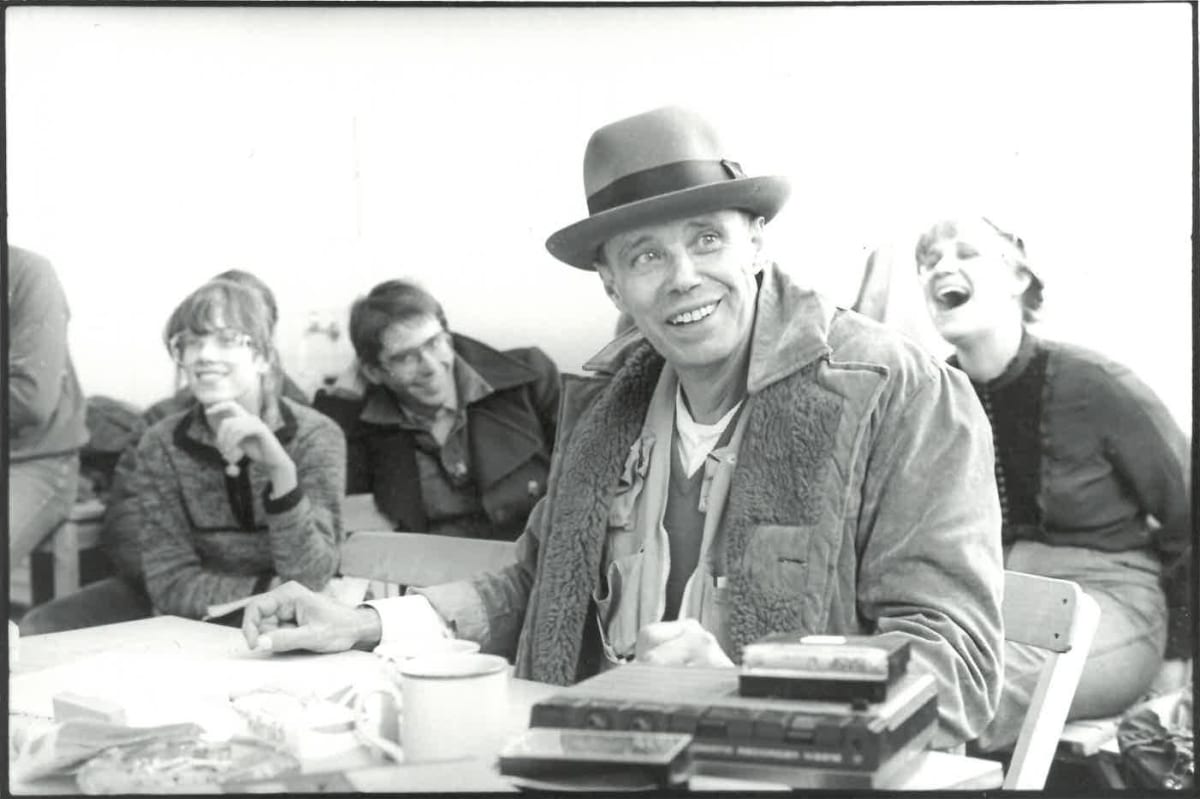Joseph Beuys A Woodstock of Ideas. Joseph Beuys, Achberg and the German South
On the occasion of the 100th anniversary of Joseph Beuys’ birthday in 2021, the Museum Ulm and the Kunsthalle Vogelmann Heilbronn are dedicating a joint exhibition project to the artist of the century. The focus is not only on Joseph Beuys as an outstanding artistic personality, but also primarily as a political figure, as well as on his special and particular connection to the German southwest. For example, Joseph Beuys obtained the felt for his objects in Giengen an der Brenz and his famous honey pump for documenta 6 was made in Wangen im Allgäu. The artist’s relationship to the German South is also intensively illuminated in particular by the first-time evaluation of the Joseph Beuys archive of the author, publisher and publicist Rainer Rappmann with letters, audio, visual and film documents in connection with the International Cultural Centre Achberg (INKA).
Founded 50 years ago, INKA was considered an important centre of intellectual and political awakening in Germany in the 1970s and 80s. Joseph Beuys made annual appearances here and worked in the spirit of his idea of “social sculpture”. His expanded concept of art is also particularly suitable for commemorating the 75th anniversary of the first free local elections in Germany after the Second World War and thus for discussing current questions on the relevance of democracy with a young generation in an extensive accompanying programme, such as Fridays for Future or Future2.
Joseph Beuys’ involvement with the “Greens” also stands for his links to southern Germany. When the Green Party was founded in Karlsruhe in January 1980, the artist was there as a participant in the founding party conference. Even though Joseph Beuys was not able to push through his own political ideas with the “Greens”, he remained a member of the party until his death. From 1980 onwards, he designed election posters for the party, which were used in the production of his editions, which are also presented in the exhibition. As an expression of his idea of the democratisation of art, his diverse and numerous multiples also occupy a significant space in the exhibition.














































































































































































